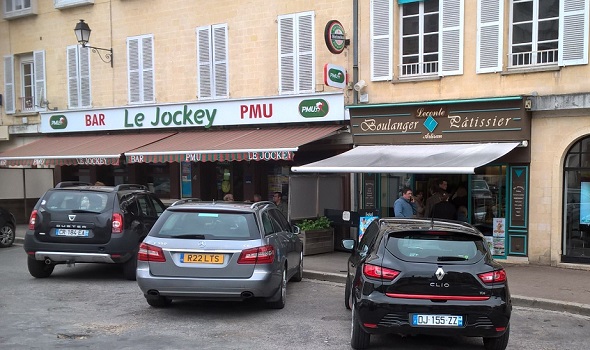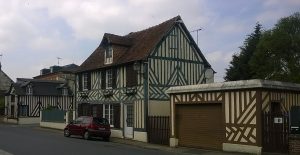The name Romanesque (around up to around 1000AD) comes from the habit of recycling ruins or copying the thick walls, arch doors and windows, round towers and vaulted ceilings of Roman buildings after the fall of the Empire. Though the Romans invented concrete, it would stay on of life’s great mysteries until the 18th Century. The vaulted ceilings and columns supporting arcades of arches allowed buildings to take on large proportions and inspire awe and wonder, ideal for fortifications, religious buildings and outdoing your neighbour.
Venacular architecture built by local builders is influenced by Celtic farmhouses whose origins go back to Celtic roundhouses. According to officialdom in Lower Normandy the norm was to build of local Caen stone and Granite with tiled roofs and in Upper Normandy half timbered (much as we associate with Tudor buildings) with thatched roofs.
In truth, what we found is that we were as likely to come across half-timbered houses as any other kind, quite possibly because they make for a very attractive home. The ones with shuttered windows and window boxes full of red geraniums could so easily have been straight from an Impressionists canvas


